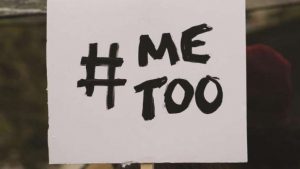
A Cambodian man died on 26 December after reportedly setting himself on fire at a temple in Lake Ridge, Virginia, according to the local authorities and temple representatives. The man, identified as 48-year-old Chi Nguonthe, was discovered by a resident of Watt Buddhacheya Mongkol Buddhist Temple, located less than 45 kilometers south of Washington, DC. Early news reports describe Nguonthe as a monk, however, the temple’s Facebook page does not describe him as a monk and photos depict Nguonthe in lay clothing.
Temple president Sarath Oung stated that the incident occurred around midday. A second monk at the temple reported seeing Nguonthe on fire outside the building. The monk alerted emergency service, who arrived within minutes. Lieutenant Jonathan Perok of Prince William County Police Department confirmed that first responders found Nguonthe suffering from severe burns inside the temple. He was pronounced dead at the scene at around 12:30 p.m.
Lieutenant Perok added that early investigations had not revealed any signs of foul play. The department characterized the event as self-immolation, although the official cause of death is pending an official autopsy. According to Ven. Oung, there were no prior indications that Nguonthe intended to harm himself or others.

Ven. Oung noted that the community of worshippers, which typically numbered around 50 per weekly service, was still in shock and seeking answers. He described Nguonthe as “a proud monk” who spent the bulk of his time in prayer and offered translation services to Cambodian-speaking temple members. (Prince William Times) Ven. Oung expressed uncertainty about any specific motivation or circumstances that could have led to the incident. Nguonthe is survived by his mother and family, including three sons.
Self-immolation has been documented in various Buddhist traditions, particularly in times of political or social unrest. It is, however, considered an extreme measure. Historical examples date to at least the 20th century, when several monks in Southeast Asia used the act to protest political oppression.
Lake Ridge, in Prince William County, is part of a broader region where a small but active Buddhist population has grown over recent decades, including temples serving Southeast Asian immigrants. Typically, local Buddhist centers focus on meditation classes, cultural preservation, and religious services rather than political activism.
Buddhism remains a minority religion in the US, with adherents drawn from diverse ethnic backgrounds and lineages. Immigrants from countries such as Cambodia, Myanmar, and Vietnam, often establish temples that serve as spiritual and cultural hubs. These places of worship host traditional ceremonies, language classes, and community events. Watt Buddhacheya Mongkol practices Theravada Buddhism, reflecting the Cambodian tradition of monastic life and daily devotion.
Temple members remained concerned about the emotional impact on congregants and the public. They voiced intentions to hold discussion sessions on coping with grief and on mental well-being in monastic settings, aiming to prevent future tragedies. Investigations continued as local Buddhists reflected on the broader implications for their community, emphasizing compassion and mutual support.
A remembrance service is planned at the temple on 1 January, from 9 a.m. to 1 p.m., with a funeral service to take place on the same day at Fairfax Memorial Funeral Home in Fairfax, Virginia, from 11 a.m. to 2 p.m.
See more
Buddhist monk sets himself on fire outside Lake Ridge temple (Prince William Times)
Man with severe burns found dead at Buddhist temple in Lake Ridge (Inside Nova)
Gruesome death of man in Buddhist temple remains a mystery (AsAmNews)
Watt Buddhacheya Mongkol (Facebook)
Related news reports from BDG
American Buddhist Confederation Donates Ambulance to New York Hospital
US-Based Buddhist Foundation Launches with US$500,000 Donation for Cambodians Impacted by COVID-19
Cambodian Buddhists in Rhode Island Struggle to Cope with COVID-19
Cambodian Genocide Remembrance Day Marked in Southern California with Lotus Flower as a Symbol of Hope
Buddhists Discuss Self-Immolation and Protest after Climate Activist’s Death
Related features from BDG
What is Violence? Self-immolation in Japanese Buddhism
The Gore and the Good of the Jataka Tales
Buddhistdoor View: Political Violence through a Buddhist Lens
Anti-War Performance, Part One














